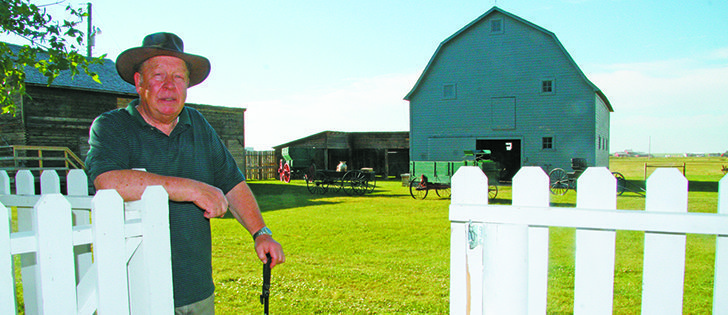Visitors travel back in time | The farm home provides insights into how the Michelsen family and the community lived
STIRLING, Alta. — Village residents had planned to gather to dedicate a rose garden at the Michelsen Farmstead, a provincially designated historic site.
But just before the appointed day, a hailstorm reduced the rose garden to splintered stalks and wilted, mud-encased foliage.
However, the storm neither cancelled the event nor daunted attendees July 18, who came to enjoy the 1902 Victorian home and farm site at the north end of Stirling.
The farmstead is owned by the village of Stirling and managed by the Stirling Historical Society.
Read Also

Students urged to consider veterinary medicine
Alberta government makes $86.5 million investment in University of Calgary to double capacity for its veterinary medicine program to address labour shortages in the field.
Roy Michelsen, who spent the first 20 years of his life in the home, was on hand to share insights with visitors about the site’s history and its connections to the Church of Jesus Christ of Latter Day Saints (Mormons.)
“One of the reasons that this house is so close to how it was built was that … we were just too broke to change it,” Michelsen said as he stood in the parlour doorway where many a fiddle player entertained square dancers of past decades.
The farmstead has always been known as a community gathering place. Inside, there was space for two squares of dancers if the furniture was pushed back and carpets rolled up.
The hayloft in the hip roof barn out back was also used for dances and meetings.
The original owners were Andreas and Kirsten Michelsen, Danes who emigrated to Utah and then moved to the Stirling area when called by the church to work on a southern Alberta irrigation project.
The house was built in 1902 and augmented with a major addition in 1912 to accommodate their seven children.
The historical society has preserved the home and farmstead as representative of the early 1900s.
It is open to the public throughout the summer, and tour guides provide information on the home and the region’s Mormon history.
Abbi Climenhaga and Sydney Gross were on duty as guides in mid-July, able to play the old pump organ and provide insight into bygone customs.
“Over there is the mending basket,” said Climenhaga.
“Whoever sat in the chair next to the mending basket had to do it. It is rumoured that the boys did better at darning socks than the girls.”
The house features some of the original furniture, plus items from the 1900s collected or donated by area residents.
Michelsen was reminded of boyhood experiences as he examined the kitchen, replete with butter churn, cream separator, huge iron stove and an array of tins and product containers. The large tin of Roger’s Golden Syrup caught his eye, and he was reminded of his mother’s long-ago request that he fetch it.
“I put it up over my shoulder like it was a barrel and the lid came off. It wasn’t a pretty scene.”
Michelsen said he visits the site occasionally and is happy the home is being preserved. However, he doesn’t make a point of insisting on historical accuracy.
“Realistically, it’s a village project at this point so I don’t pretend to be overly protective.”
Outside, the farmstead includes a century-old granary and storage shed and a well-preserved barn complete with a horse weathervane.
The barn housed horses, cows, pigs and chickens at various times in its history. The stalls, stanchions and some of the paraphernalia remain there to prove it.
The family branding irons, one for cattle and one for horses, still hang on the shed wall, though Michelsen doesn’t remember the latter ones being used.
“By the time I came along, everybody knew everybody’s horse in town by sight anyway. Just like they’d know their kids, they’d know their horses.”
















